By measuring real users' Web Vitals, Rakuten 24 also found that a good Largest Contentful Paint (LCP) can lead to a conversion rate increase of 61.13%.
Rakuten 24 is an online store that collaborates with both major multinational and domestic consumer goods manufacturers to offer a great variety of daily necessities including healthcare, beverage, pet supplies, baby products, and more. This store is provided by Rakuten Group, Inc.—a global leader in internet services, and is among the top performers on their digital marketplace platform in Japan.
Understanding the impact of web performance on user experience, the Rakuten 24 team has been continuously measuring, optimizing and monitoring Core Web Vitals and other metrics.
As a result, over 75% of their users are experiencing good Largest Contentful Paint (LCP), First Input Delay (FID) and First Contentful Paint (FCP). However, they are still working on Cumulative Layout Shift (CLS) improvements.
After analyzing homepage data, Rakuten 24 found that a good LCP score can lead to:
- An increase of up to 61.13% in conversion rate.
- 26.09% in revenue per visitor.
- 11.26% in average order value.
- A good FID score can lead to an increase of up to 55.88% in conversion rate.
To further correlate Core Web Vitals and business metrics, Rakuten 24 also ran an A/B test focused on optimizing Core Web Vitals and related metrics, and saw an improvement of:
- 53.37% in revenue per visitor.
- 33.13% in conversion rate.
- 15.20% in average order value.
- 9.99% in average time spent.
- A 35.12% reduction in exit rate.
Highlight the opportunity
Though optimizing web performance is a smart investment to improve user experience and business growth, Rakuten 24 team understands how difficult it can be to convince stakeholders to adopt Core Web Vitals and focus on web performance. They believe that showing stakeholders exactly what kind of Return on Investment (ROI) performance optimization can bring is the best way to get them on board.
Being a relatively new and independent service, Rakuten 24 used their advantage of flexibility to take up the challenge. They believe that the result of their case study would help them make more data-oriented decisions in the future, as well as help other developers measure the impact of their work and convince their stakeholders that improving performance is worth the investment. Find out how they did it in this post.
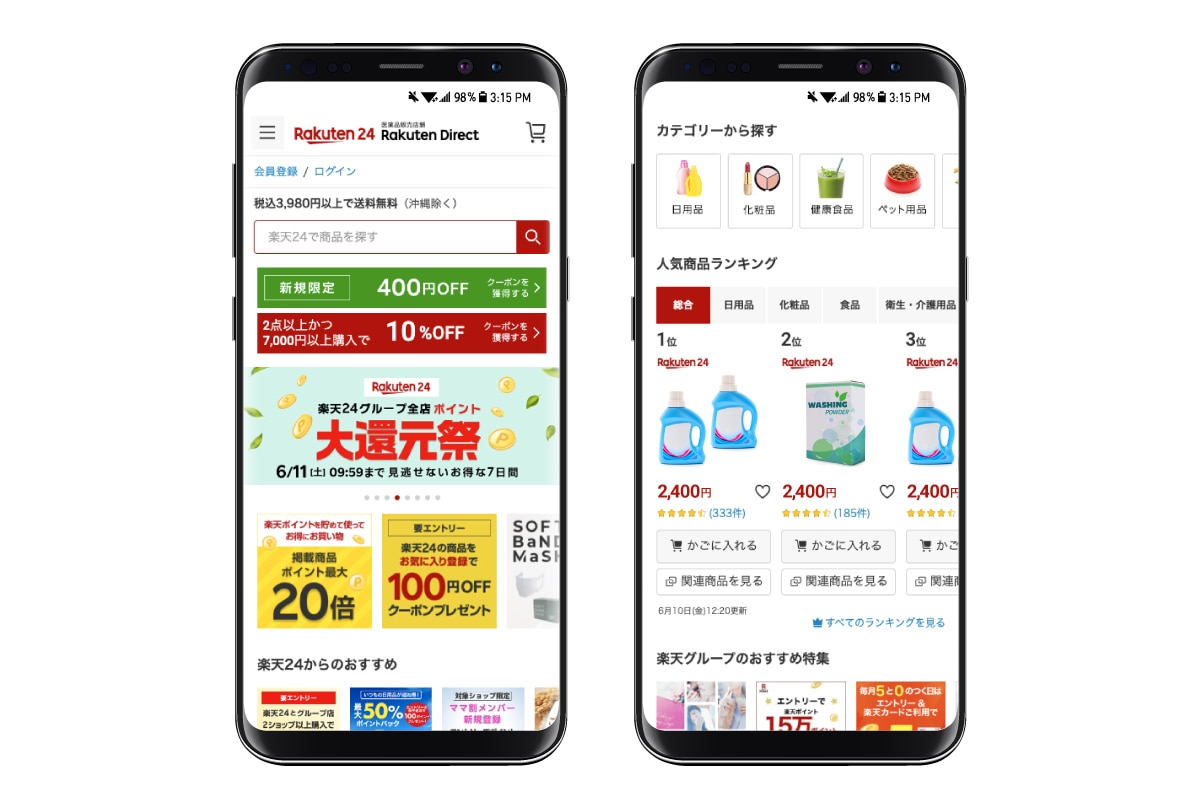
Optimize JavaScript and resources
- Eliminate render-blocking resources.
- Split code and use dynamic
import(). - Split all content into separate parts and lazy load below-the-fold HTML files.
- Execute and load JavaScript on demand.
- Identify slow JavaScript resources and optimize the loading process by using the async attribute on
<script>tags and establishing early connections to important origins (Resource hints such asdns-prefetch,preconnect, andpreload). - Remove unused code, and minify and compress code.
- Use a CDN.
- Control caching using Service Worker with Workbox.
Optimize images
- Lazy load below-the-fold images.
- Optimize images with a CDN, deliver properly sized images, compress images, and adopt the right image formats for the job (WebP, SVG, Web Fonts).
Optimize CLS
- Use CSS
aspect-ratioto reserve the required space for images while the images are loading. - Use CSS
min-heightto minimize layout shifts while elements are lazy loaded.
Performance measuring
Besides using PageSpeed Insights to audit their website, the team wanted to find a better way to know what the users are actually experiencing in the field. Therefore, Rakuten 24 decided to use the web-vitals JavaScript library to measure Core Web Vitals and other metrics in the field and send the data to inhouse analytics tool.
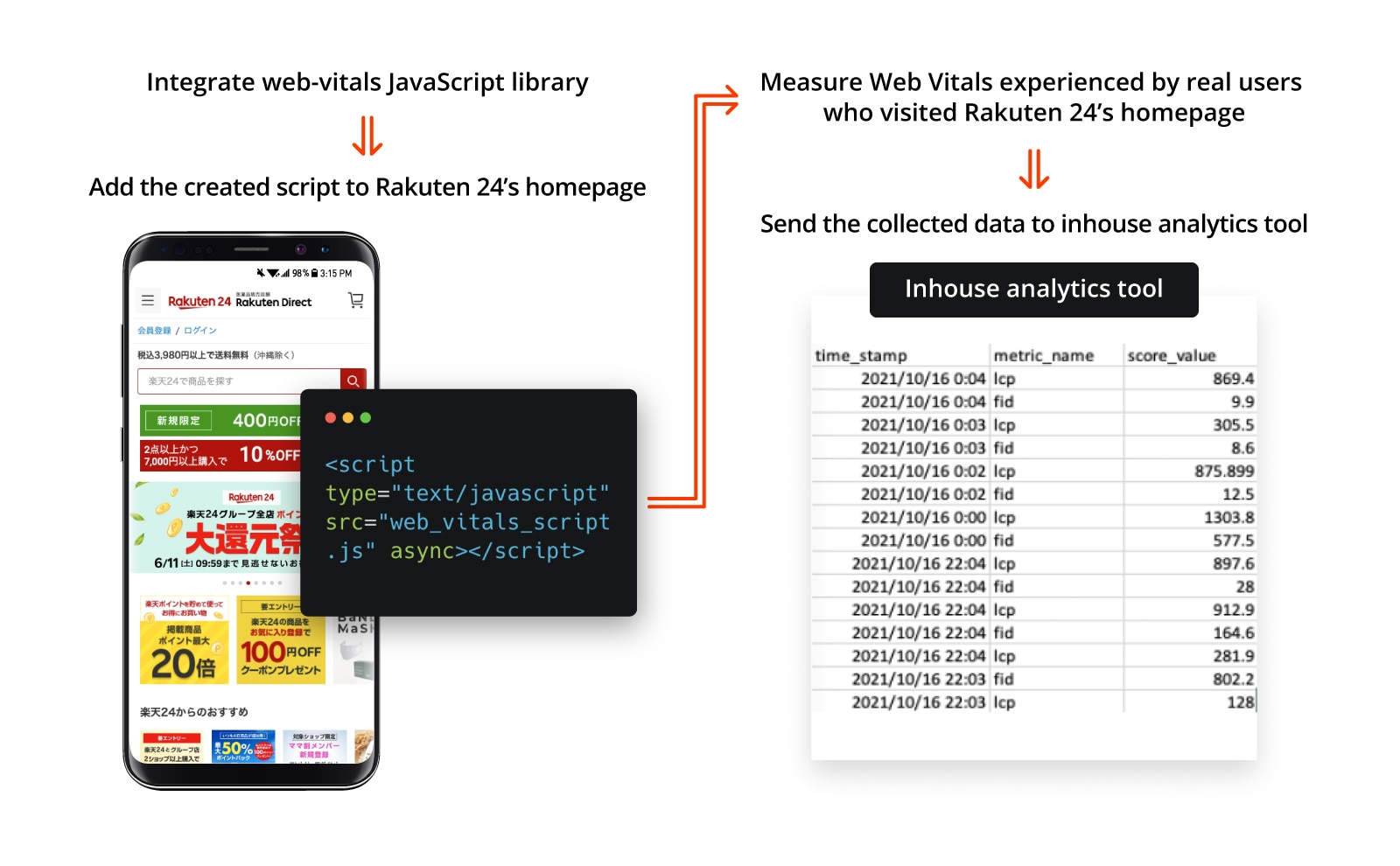
Performance analyzing
The team analyzed the collected field data to determine if there is any correlation between the Core Web Vitals and the key business metrics. They found out that the converted users tend to experience a better LCP than the users who didn’t convert.
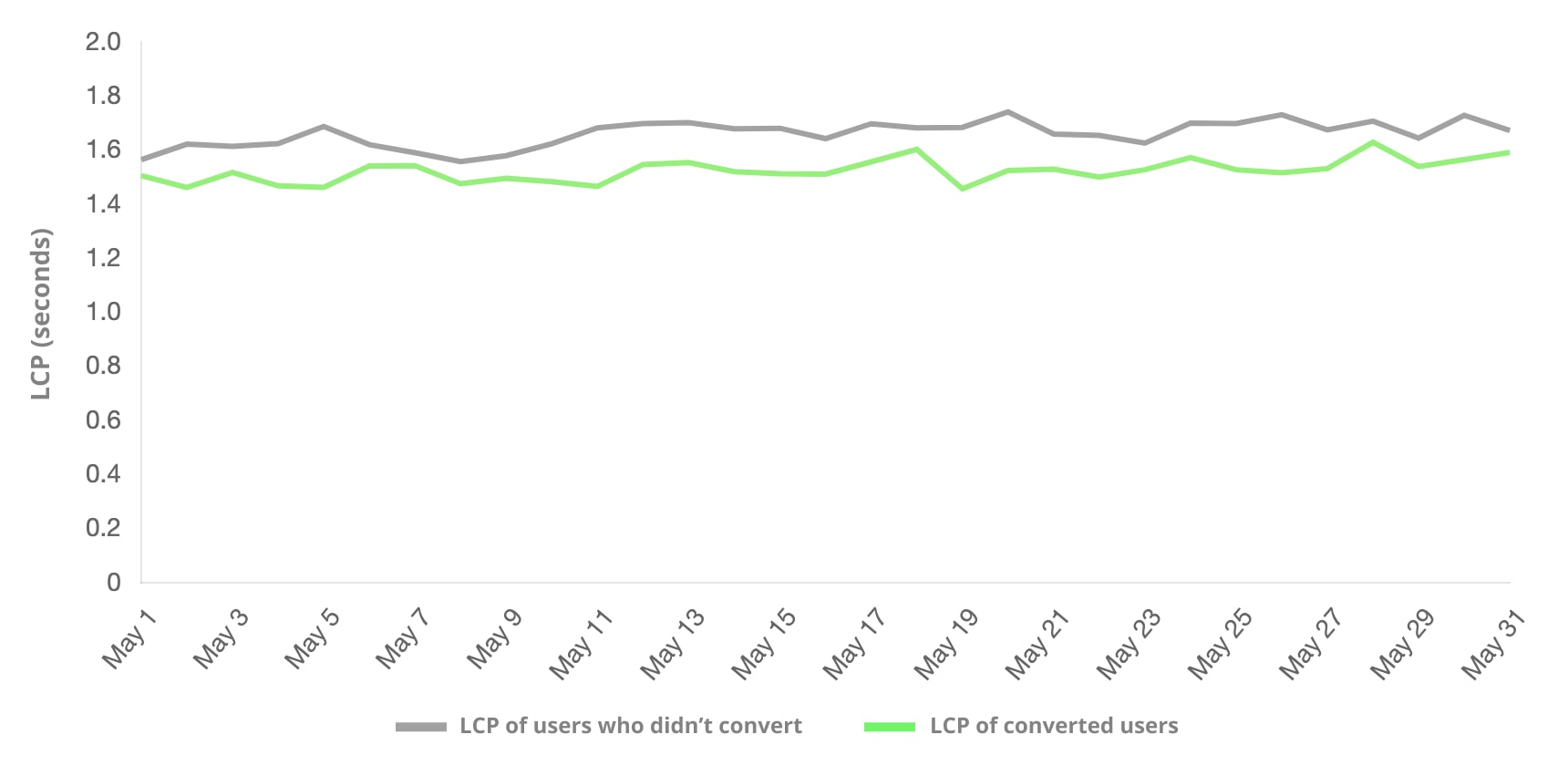
The collected data also revealed that:
- A good LCP can lead to an increase of up to 61.13% in conversion rate, 26.09% in revenue per visitor, and 11.26% in average order value.
- A good FID can lead to an increase of up to 55.88% in conversion rate compared to the overall average data.
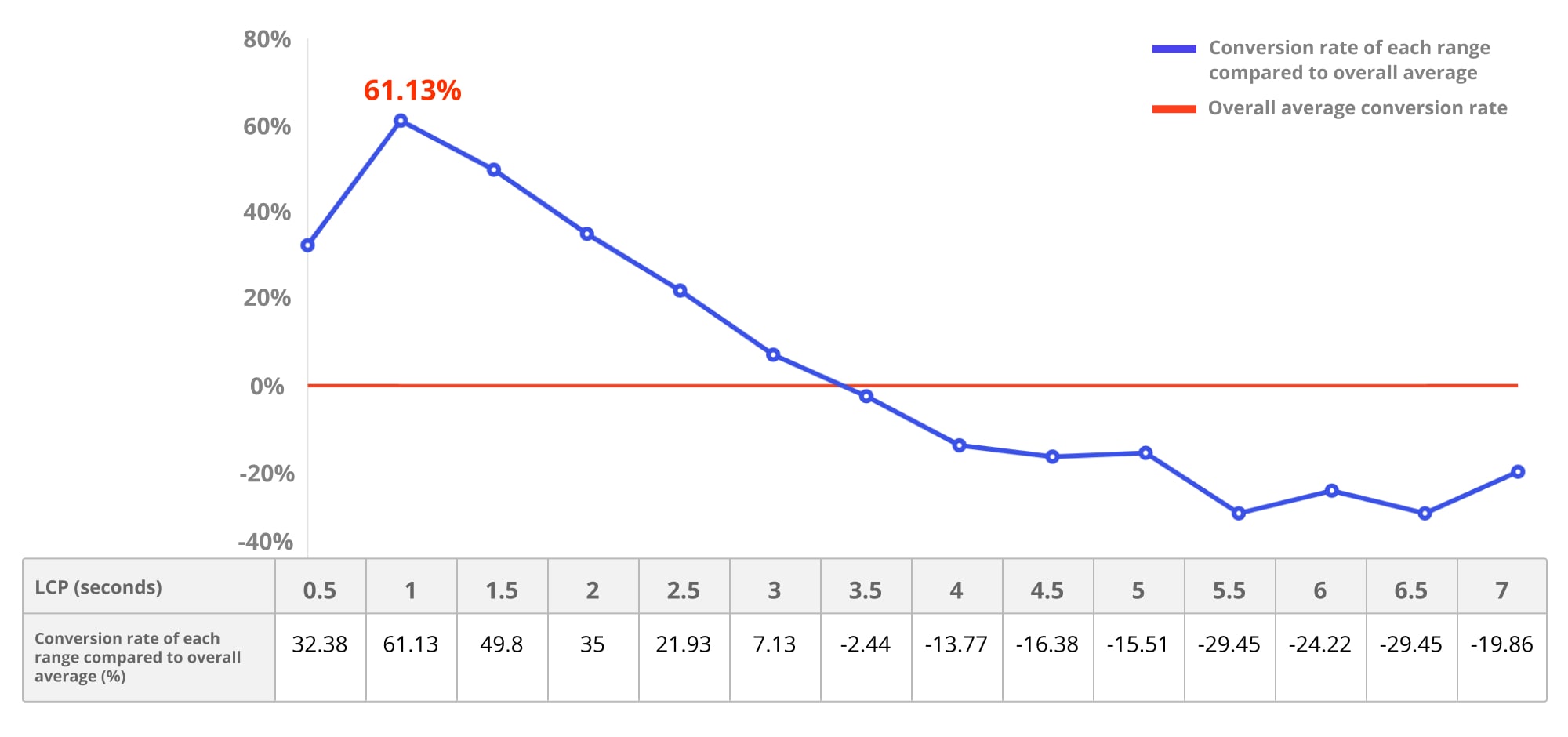
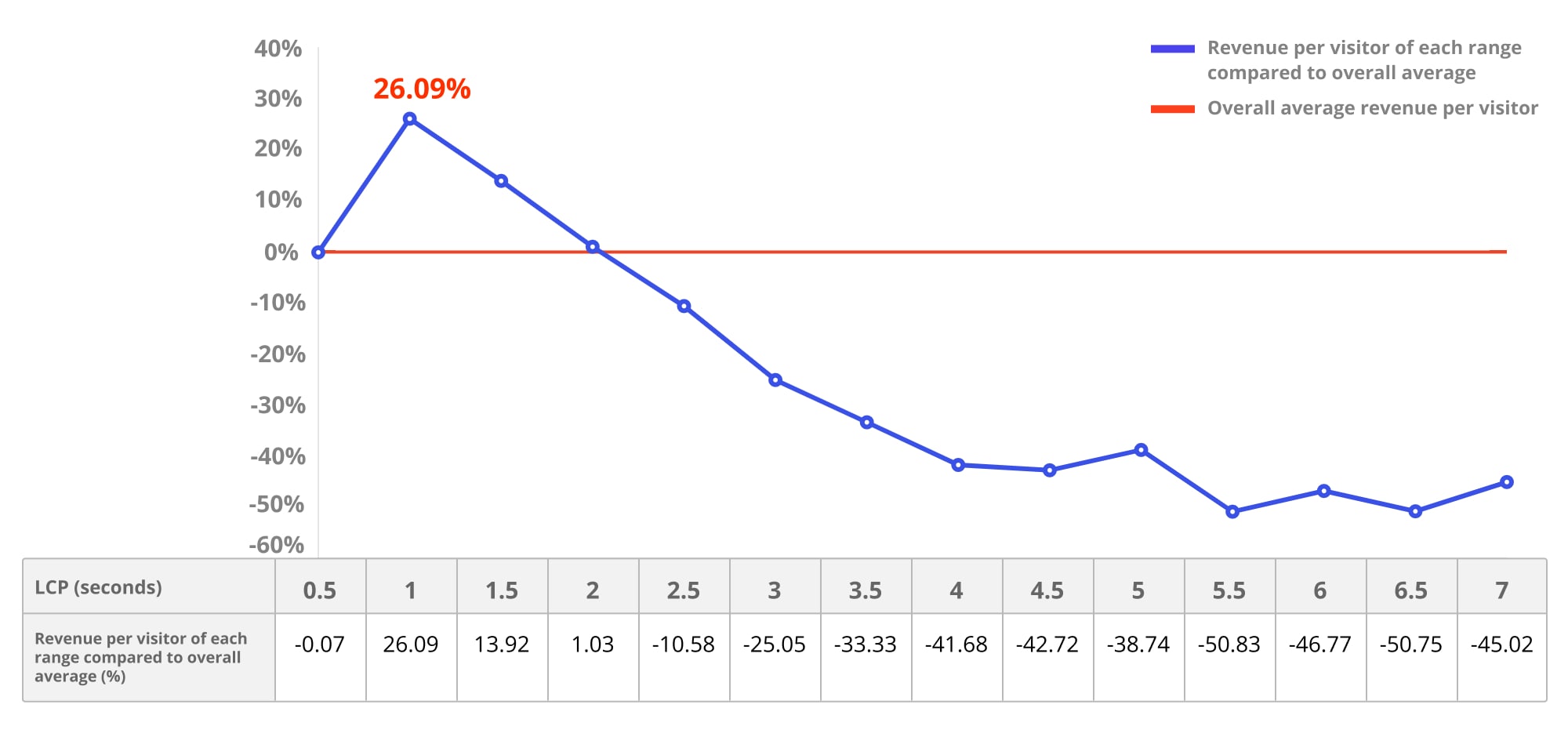
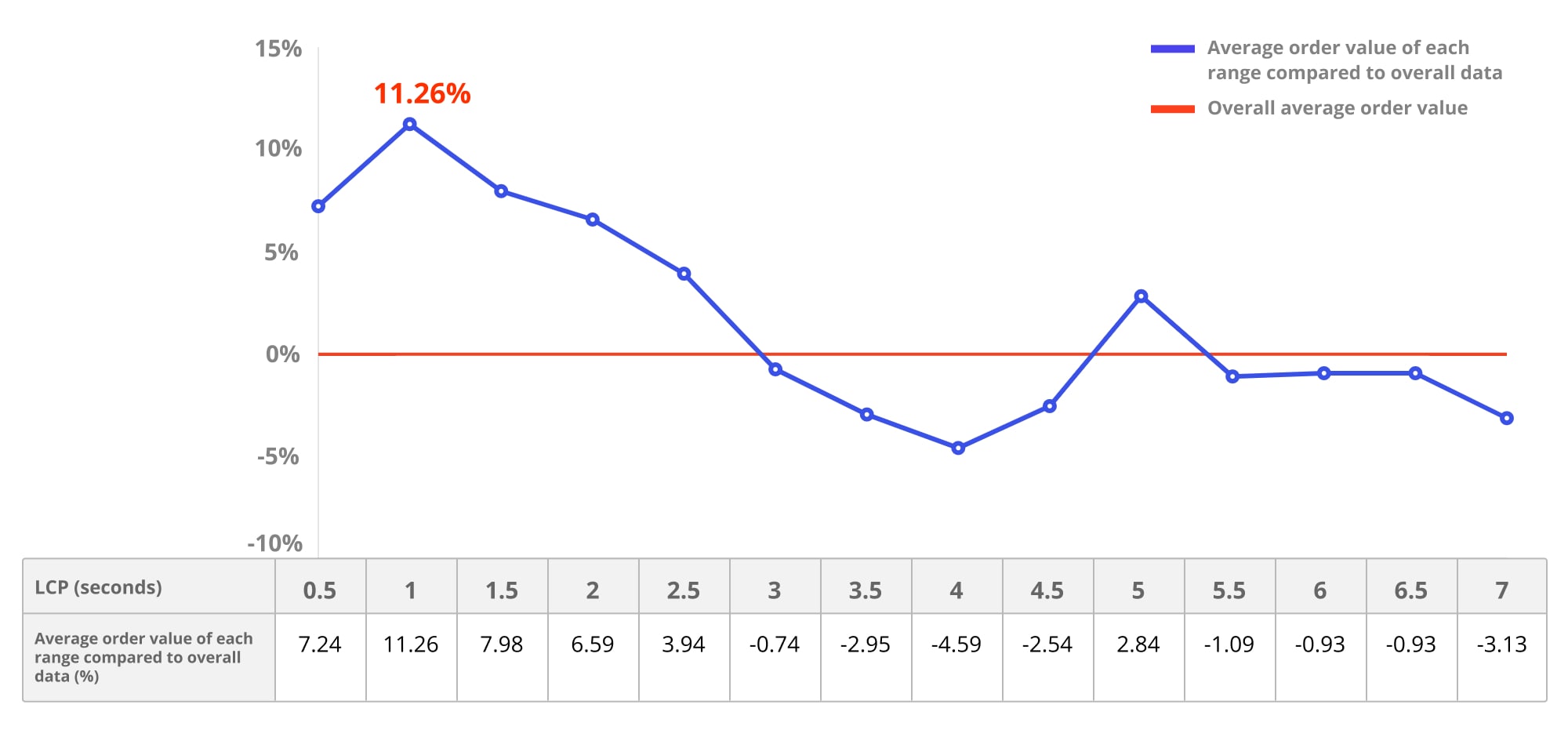
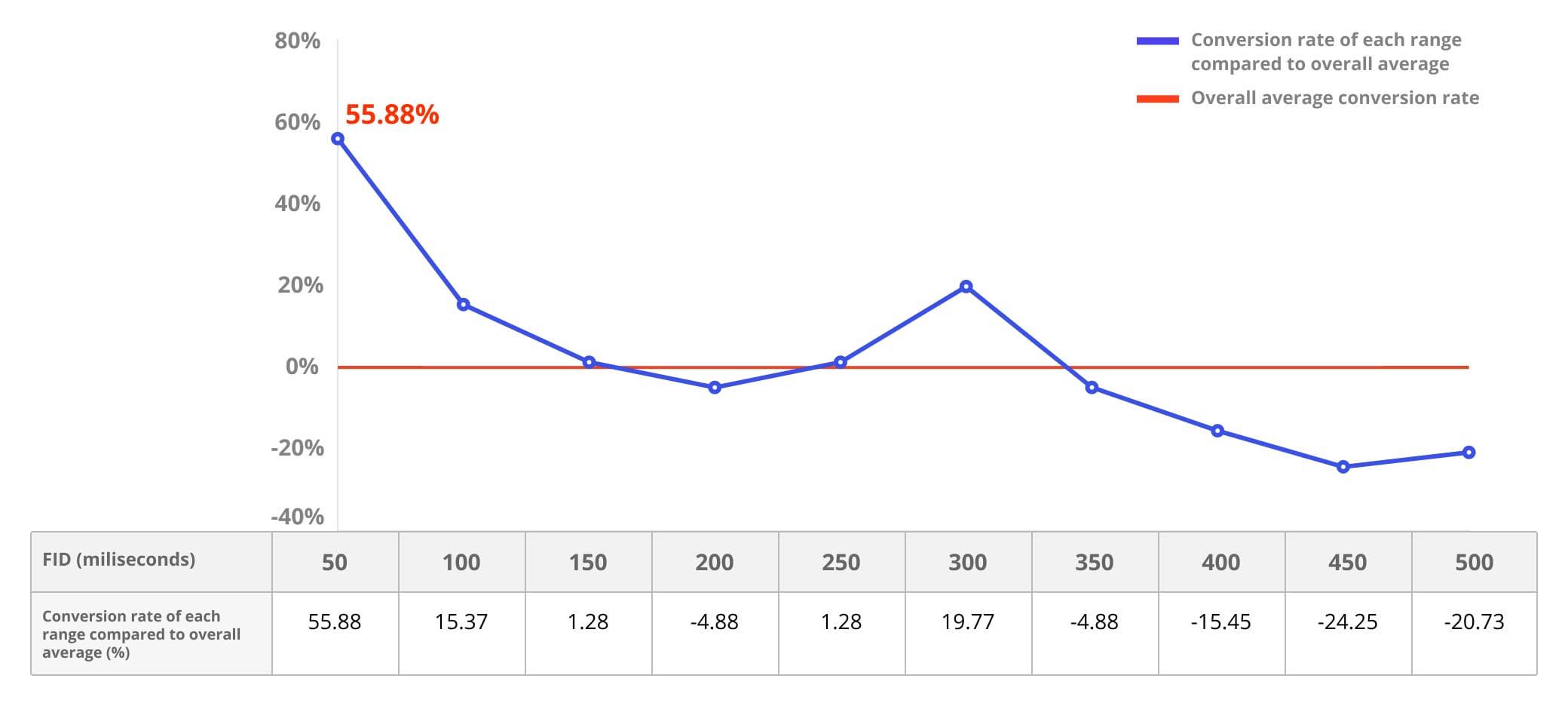
Performance monitoring
The team built a performance monitoring dashboard using the data collected in the field and business intelligence tool. This is important for monitoring progress and preventing regressions.
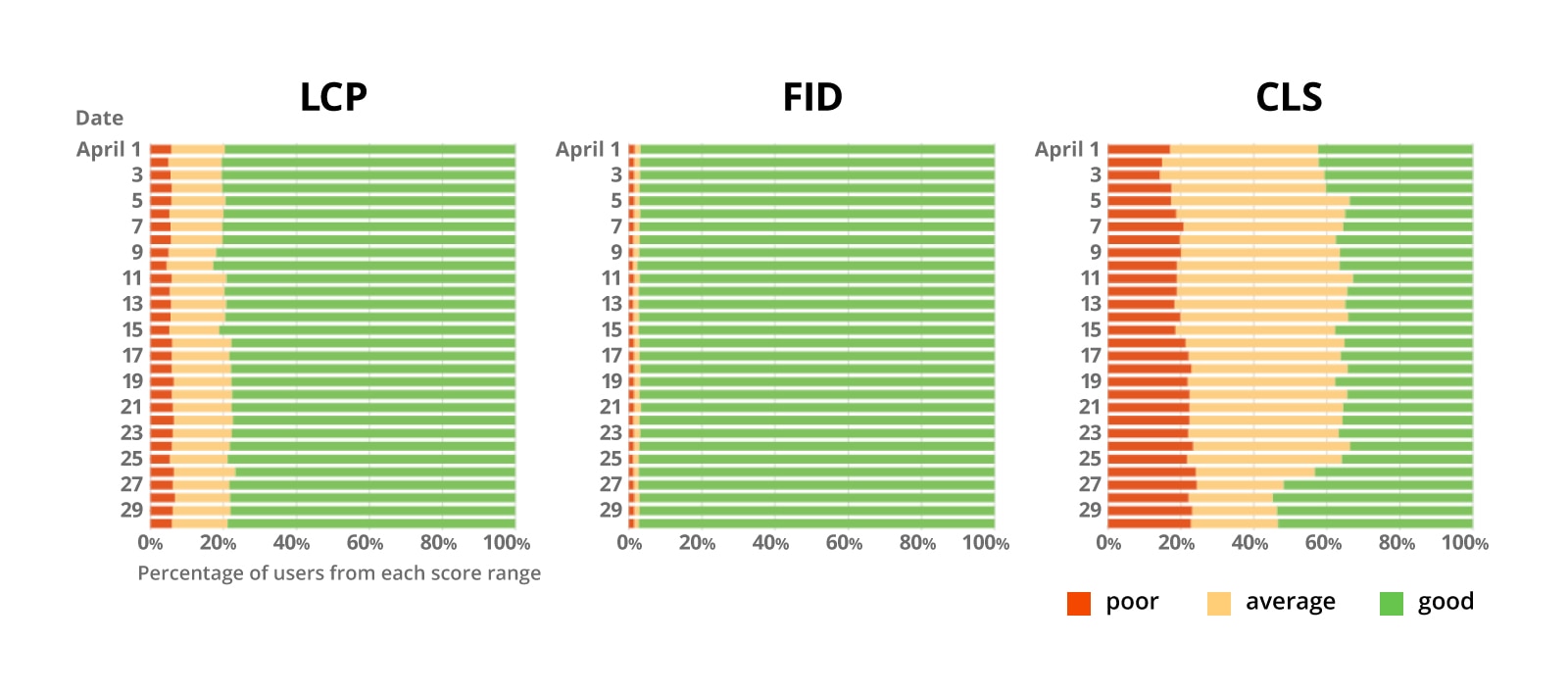
A/B test
Believing that A/B tests are a good way to measure the business impact of performance optimizations, the team optimized one of their landing pages for Core Web Vitals then compared the optimized version with the original page via A/B test for a month. They picked a landing page with significant traffic and conversion so that the test could achieve meaningful results. During the test duration, 50% of the traffic was sent to the optimized landing page (version A), and 50% was sent to the original page (version B). The only difference between version A and version B was that version A was optimized for Core Web Vitals and there were no other functional or visual differences.
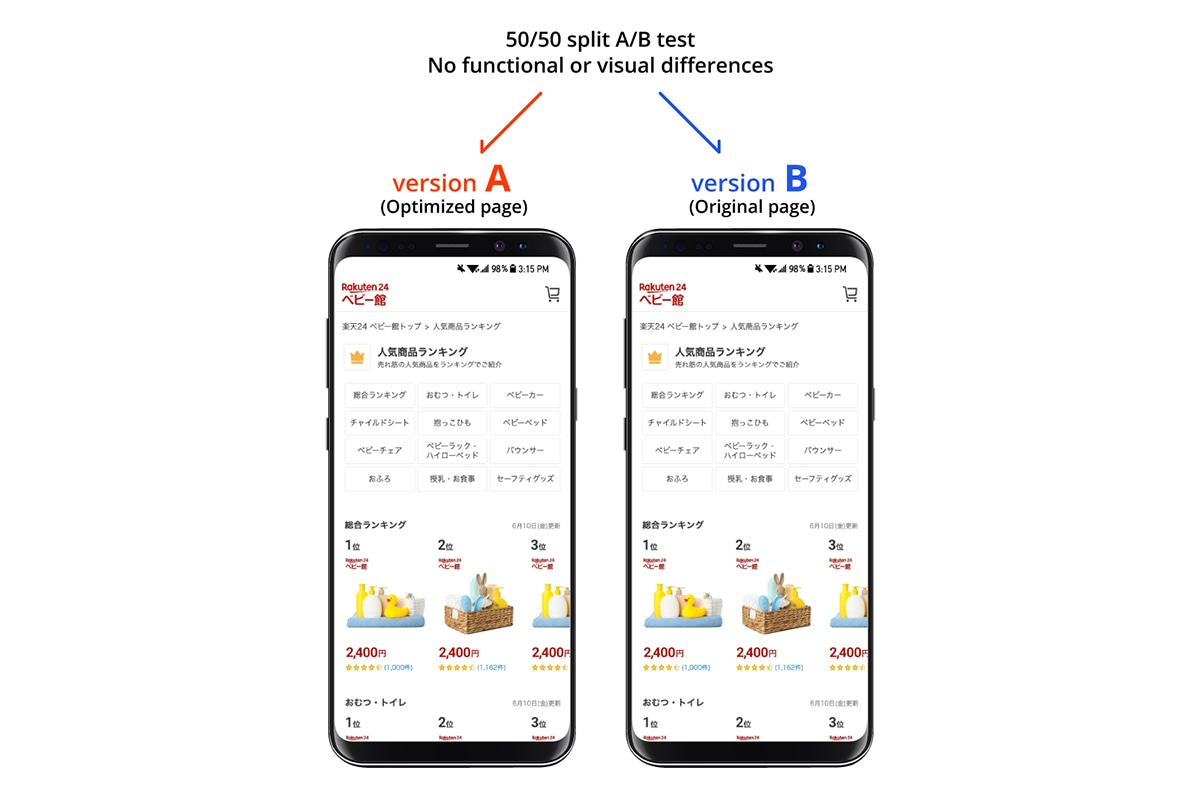
The optimized version A finished loading 0.4 seconds earlier in the mobile load test and shows no significant layout shift. In fact, the CLS of version A improved by 92.72% compared to version B. Other Web Vitals scores also improved: FID improved by 7.95%, FCP improved by 8.45%, and TTFB improved by 18.03%.

Comparing the optimized version A to the unoptimized version B, Rakuten 24 found that version A brings about:
- 53.37% increase in revenue per visitor.
- 33.13% increase in conversion rate.
- 15.20% increase in average order value.
- 9.99% increase in average time spent.
- 35.12% reduction in exit rate.
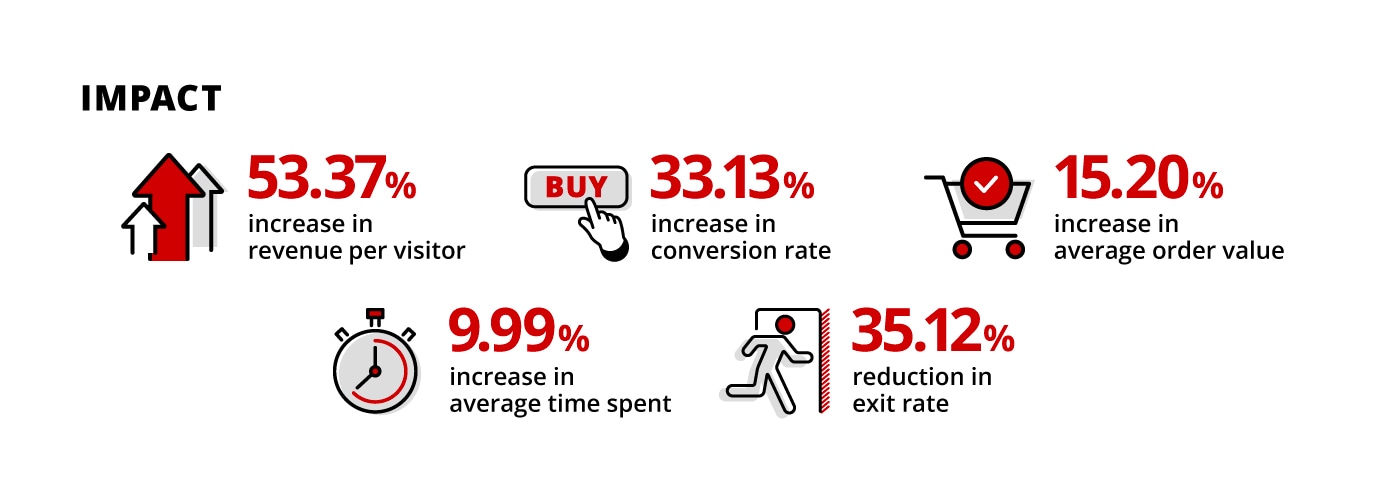
Conclusion
Web performance optimization is challenging but rewarding. By taking a data-driven approach, Rakuten 24 has successfully delivered better user experience as well as measured positive impact on their business. Understanding that this is just a part of the journey not the destination, they will continue improving their website to provide online shoppers with more delightful experiences.
Optimization requires a joint effort and developers do not have to be alone on this journey. By sharing their struggles and achievements, Rakuten 24 hopes that more developers can use Core Web Vitals data to develop a mutual understanding with stakeholders then work together towards high-quality user experience and business growth.




